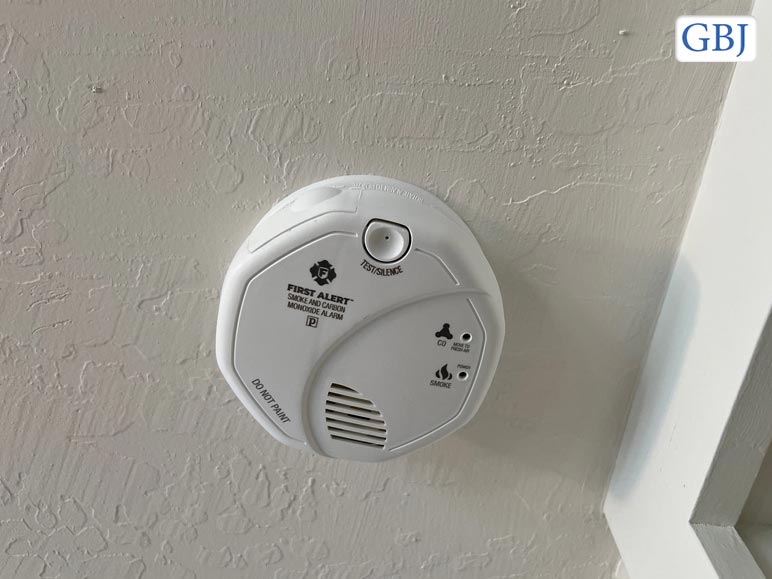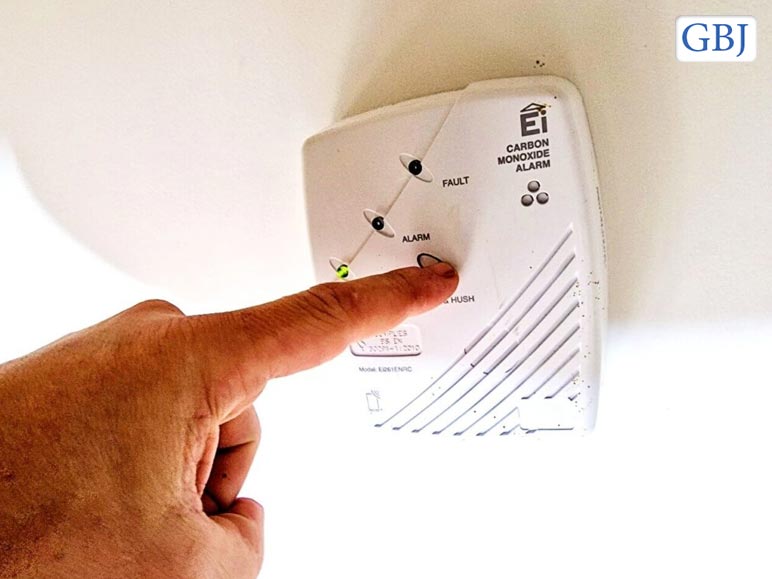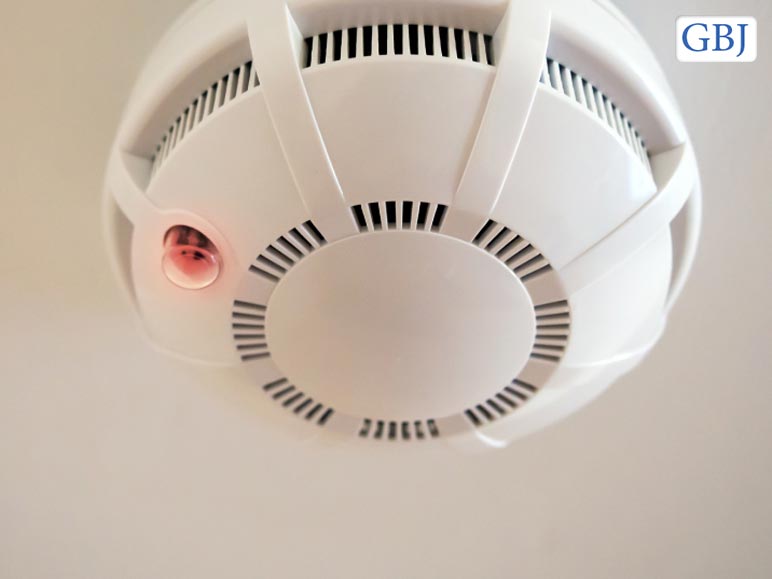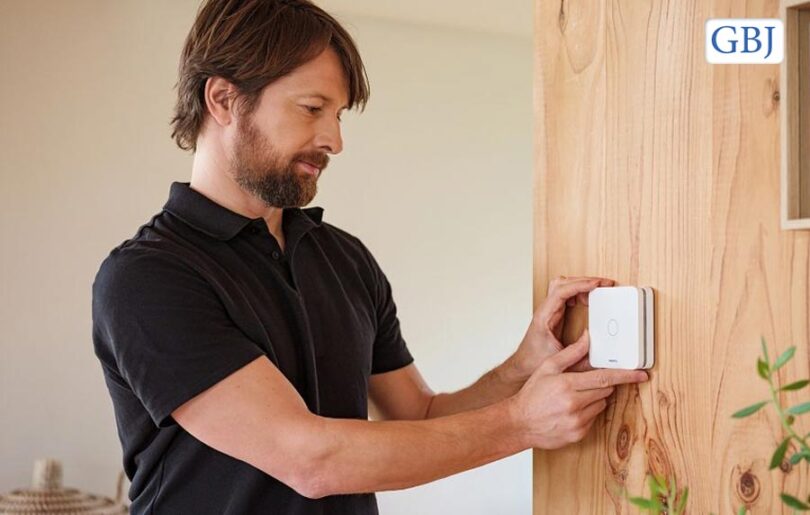Searching for the answer to why is my carbon monoxide detector beeping. This is an invisible, odorless gas infiltrating your space, silently posing a lethal threat. The dark intruder is carbon monoxide (CO), and in its shadow, carbon monoxide detectors emerge as unsung heroes, standing guard against potential disasters. This article unveils the intricacies of these guardians—how they function, their advantages and drawbacks, and the pervasive embrace of their protective aura.
What’s A Carbon Monoxide Detector?


A carbon monoxide detector is no ordinary gadget; it’s a silent sentinel designed to sniff out the lurking danger of carbon monoxide in the air. Its mission? Thinking of why my carbon monoxide detector is beeping even when the CO level is very low.
What to do when a carbon monoxide detector beeping intermittently? To blare out a warning when it senses CO levels reaching alarming heights, giving occupants a vital heads-up to evacuate before health havoc ensues.
How Does The Carbon Monoxide Detector Function?


Under their sleek exteriors, carbon monoxide detectors harbor electrochemical sensors that dance with CO molecules in the air. When these molecules cross a certain concentration threshold, the sensors strike a chord, setting off an alarm that resonates through the space, an audible reminder of potential danger.
Some detectors go the extra mile, flaunting digital displays that reveal CO levels in parts per million (ppm).
The Pros: Where Strengths Shine
| Early Detection Brilliance | Carbon monoxide detectors steal the spotlight with their ability to detect the stealthy presence of CO early on, offering a crucial window for evacuation. |
| Wallet-Friendly Guardian | In a world where safety often comes at a hefty price, these detectors stand out as affordable protectors, accessible to all seeking home safety on a budget. |
| Easy-Peasy Installation | No engineering degree is required here! Most carbon monoxide detectors boast user-friendly installations, keeping the hassle to a minimum. |
| Safety Standard Stalwart | Compliance with building codes and safety regulations is non-negotiable, making these detectors a stalwart guardian against potential legal pitfalls. |
The Cons: Navigating The Shadows
| Detection Range Conundrum | However, the Achilles’ heel emerges—the limited detection range. Larger spaces may demand a team of detectors for comprehensive coverage. |
| Lifespan Countdown | Like any hero, the sensors in CO detectors have their limits, demanding replacement after a stint of vigilant service. |
| False Alarms Fiasco | Picture this: an unexpected alarm symphony triggered by environmental whims like humidity or airborne pranks. False alarms are a potential annoyance. |
The embrace of carbon monoxide detectors extends far and wide, particularly in regions where heating systems, gas appliances, and fuel-burning marvels reign supreme. From cozy homes to bustling businesses and sprawling industrial havens, these devices have etched their place as protectors against the hazardous effects of carbon monoxide.
What To Do If The Carbon Monoxide Alarm Beeps?


The idea that an odorless, colorless, and tasteless gas could prove fatal within the confines of one’s home or office is undeniably unsettling. Delving into the realm of carbon monoxide (CO) poisoning becomes imperative for safeguarding against the perils associated with this silent, deadly adversary.
Statistics reveal that approximately 170 people pass away from carbon monoxide poisoning annually in the United States. The prevalence of CO poisoning intensifies during the winter months, coinciding with sealed windows and the heightened usage of heating elements like furnaces and fireplaces.
Tragically, these fatalities are entirely preventable, starting with the installation of carbon monoxide detectors in residential and commercial structures. Equally vital is the dissemination of knowledge about responding when the CO alarm signals impending danger.
Navigating the Risks of Carbon Monoxide Alarm Activation Having conscientiously adhered to legal and safety measures by installing smoke and CO detectors, one encounters an unsettling scenario when the detector initiates a series of carbon monoxide detector beeping 5 times.
What Is The First Aid Treatment For CO Poisoning?
Herein lies an easy-to-understand introduction to the immediate actions to undertake:
Evacuate the premises if you or others exhibit symptoms. The paramount step necessitates a swift exit, prompting an examination of a comprehensive list of common symptoms associated with CO exposure.
What are two warning signs of carbon monoxide poisoning? Here are the symptoms of carbon monoxide poisoning:
- Fatigue and drowsiness
- Headaches
- Impaired judgment
- Shortness of breath
- Confusion
- Low blood pressure
- Rapid heartbeat
- Chest pain
- Nausea and vomiting
Notably, pets often manifest CO poisoning symptoms before humans, displaying weakness or unresponsiveness. Vigilance regarding symptoms while exiting is crucial.
Carbon Monoxide Detector Maintenance Tips


Reacting promptly to a beeping carbon monoxide detector is pivotal, given the correlation between prolonged exposure and severe health repercussions.
The toxic gas displaces oxygen in the bloodstream, potentially causing lasting damage to the brain, organs, heart, and even death. It is not uncommon for individuals to mistake symptoms for the flu, emphasizing the prudence of seeking fresh air when the detector activates.
1. Detector Evaluation:
Scrutinize the carbon monoxide detector beeping time. Distinguishing the type of detector you possess is crucial, as varied beeping patterns convey distinct messages. A low battery typically emits short chirps at regular intervals.
Meanwhile, dangerous CO levels prompt 4 or 5 consecutive beeps every 4 seconds. The imperative nature of discerning these distinctions cannot be overstated to avert misconstruing a perilous gas presence for a mere low battery signal.
2. Emergency Services Outreach:
Upon securing the exterior, promptly dial the closest emergency service or the local fire department (911). Confirm the safe exit of family members and visitors, refraining from re-entering the building if someone remains unaccounted for. Providing relevant information to emergency services aids in targeted assistance.
Establishing a comprehensive escape plan after carbon monoxide detector beeping
or fire emergencies is wise, enhancing collective awareness of emergency procedures and meeting points.
3. Professional Carbon Monoxide Inspection:
Seek professional intervention post-emergency. Following a CO emergency, engaging professional services becomes imperative to identify, rectify, and if necessary, replace the source of the leak.
Potential leakage points encompass chimneys, furnaces, fireplaces, wood-burning stoves, generators, central heating systems, and gas ranges. Damage, improper installation, or incorrect usage often underlie CO leaks, with winter months exacerbating risks due to sealed windows and heightened appliance usage.
Routine Detector Testing:
Regularly assess your carbon monoxide detectors and carbon monoxide detector beeping time. Even after a false alarm, consistent testing remains pivotal.
Monthly checks for outlet-plugged detectors and annual battery replacements for battery-operated ones are advised. Replacement within the 5-7-year lifespan, as recommended by manufacturers, further ensures optimum functionality.
Bottomline:


The gravity of carbon monoxide poisoning necessitates a conscientious approach. Share this information with tenants, family, and friends to cultivate awareness of the risks and appropriate responses when the carbon monoxide detector beeping sounds the alarm.
Read Also:
- Is Other Specialty Stores A Good Career Path?
- 10 Common OfferUp Scams To Stay Safe in 2024
- What Must An Entrepreneur Do After Creating A Business Plan?

